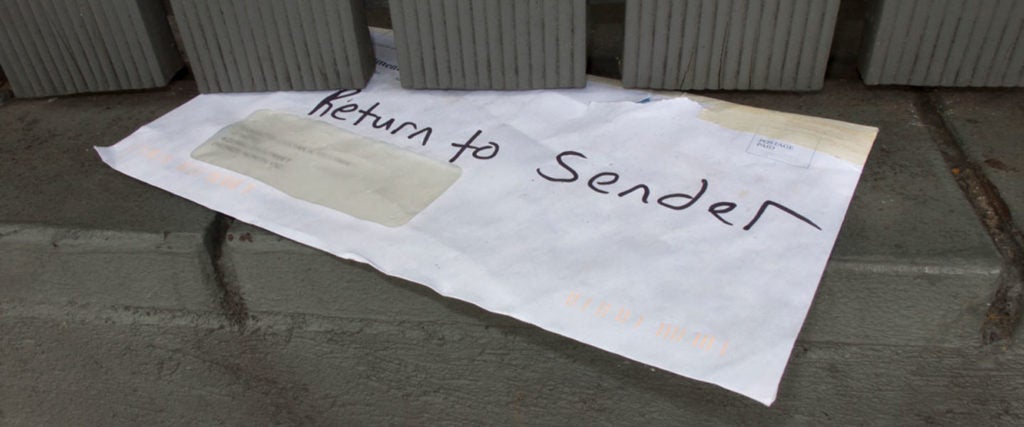Having your mailbox perpetually flooded with letters addressed to someone other than yourself is a reality that almost everyone deals with at some point in life. When I first moved into my most recent apartment, I was receiving so many letters to so many different people that my mailbox might as well have been a designated post office. In time, though, I was gradually able to slow the surge of astray mail I was receiving by directing it to its rightful owners.
Here’s how…
Step #1: Leave Notes for Your Postal Carrier
While it might sound too simple to be effective, writing “no longer at this address” or “return to sender” on any misdelivered letters (I use a red pen for extra emphasis), then placing them back into your mailbox lets both the postal service and the sender know that their mail is going to the wrong person. In the case of spam mail, it being delivered back to the sender can motivate them to update their records, or in the case of more important mail, it being sent back to the post office can at least help them begin the process of tracking down its rightful owner.
This tactic may take some time, but if you keep leaving notes — and maybe store a pen in your mailbox for simple, easy note taking — it does work, trust me. This was all I needed to do to significantly slow the barrage of misdelivered mail to my address (and there was a lot).
Step #2: Scratch Out the Barcode
Because a lot of our mail these days is automated, if you see a barcode anywhere on your misdelivered mail (check the back!), the USPS recommends crossing it out in addition to writing “not at this address.” This essentially forces an actual human to take a look, rather than them skipping over your note because they were able to simply scan the barcode prior to delivery.
Step #3: Contact Your Postmaster
If both of the above steps fail, your next course of action should be to file a complaint with the postmaster at your nearest post office. You can send a letter, give them a call or simply walk into the post office to discuss. They may ask you to file an official request against the sender, which again, may take some time. But these complaints are taken seriously, and you should eventually get the results you want.
Step #4: Avoid Throwing It Away
While simply trashing any mail not meant for you might feel like the simplest approach, (1) that would be breaking the law; and (2) destroying the mail also destroys any tools you have to prevent even more from coming your way. Plus, the person who was supposed to receive it could really want it, so consider them, too — because if your important mail was being delivered to someone else, you’d want them to do the same, right?

